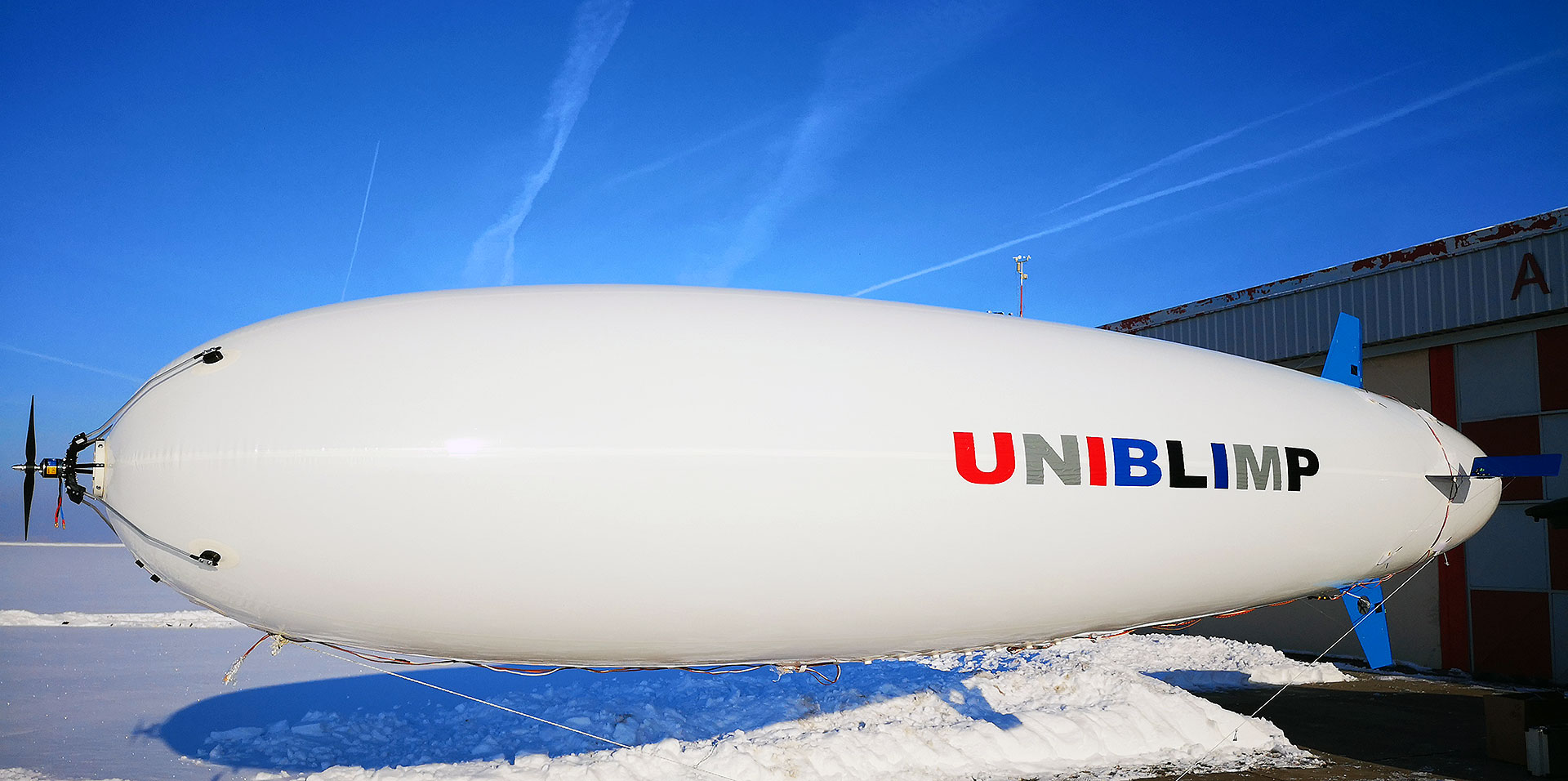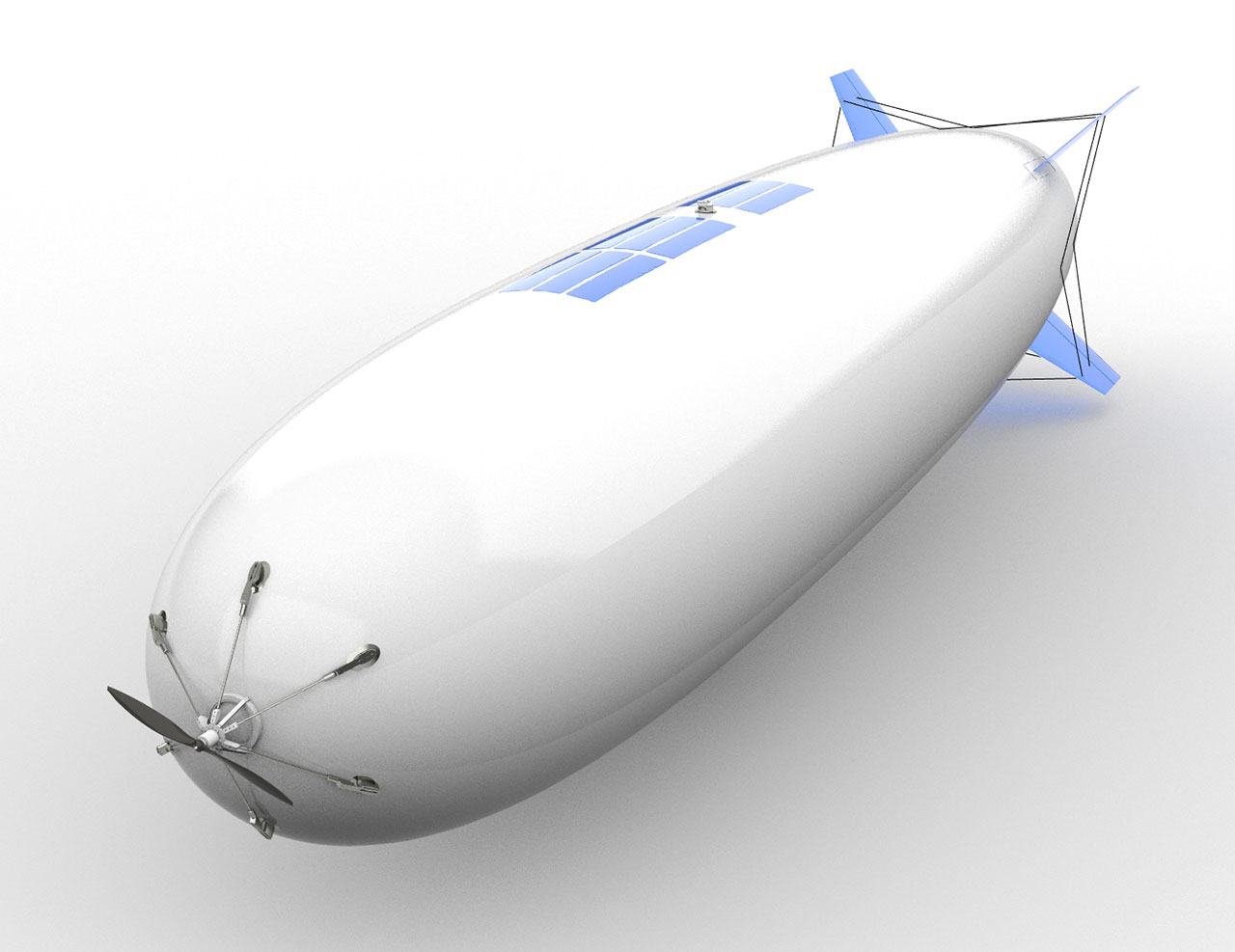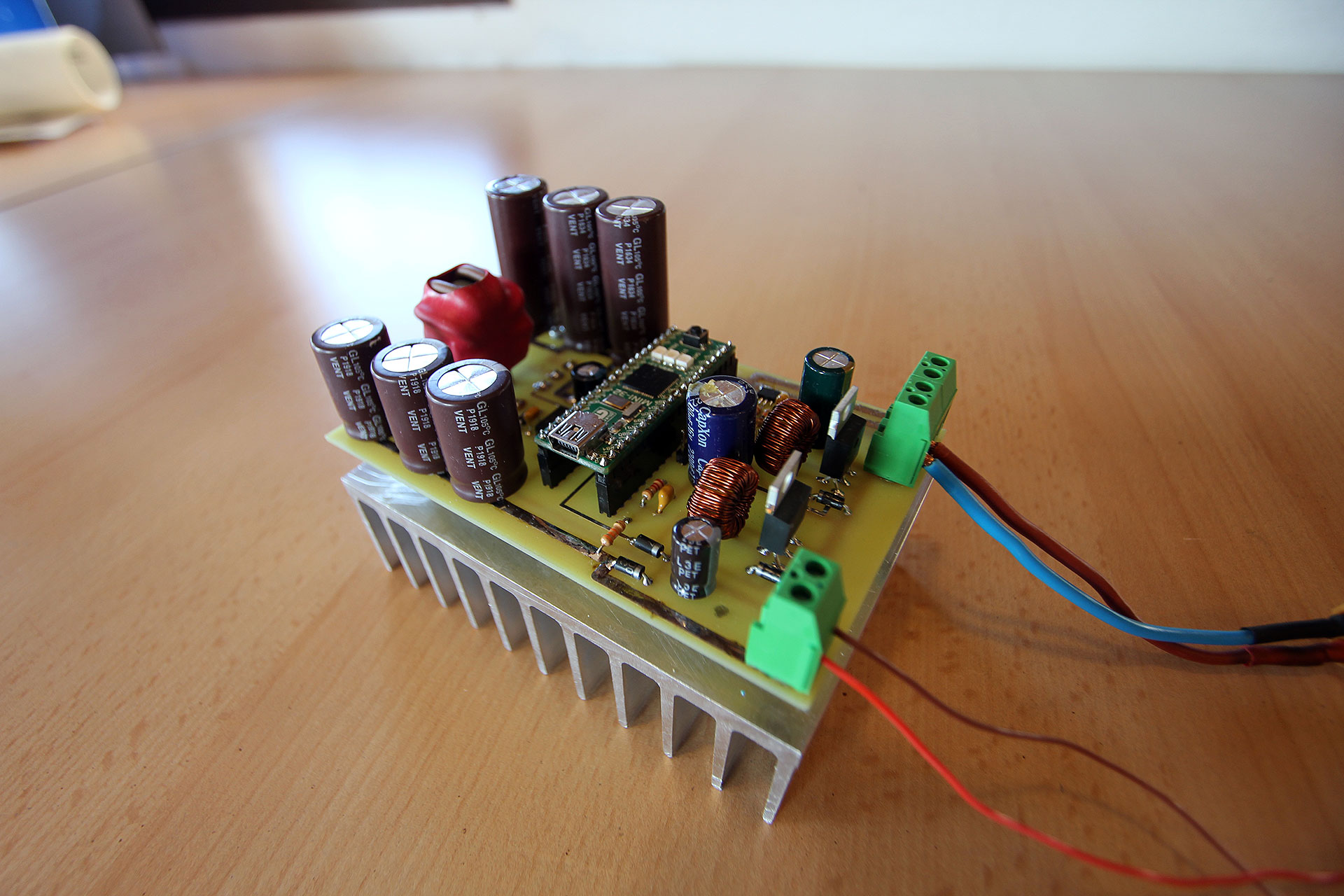2 basic types of UniBlimps Only batteries or Batteries + solar modules
From LONG range to VERY LONG range of flight

Battery powered UniBlimp
Uniblimp powered exclusively by batteries is for clients who do not require long flight autonomy - 1 to 2 hours.
The flight characteristics are identical to those of the solar UniBlimp and the only difference is the length of autonomy. Sizes range from 7 to 12 and more meters and it depends exclusively on the weight of your load that you want to hang on the UniBlimp. So when you contact us, the key information is the weight of your load, and based on that, we design and produce the appropriate size. I remind you that we are manufacturers, so part of our job is to design and produce UniBlimp of appropriate size.
Thanks to the progress of digital technology, many things such as HD, IR, laser, lidar, magnetometer, relay, etc. can be "packaged" in a few kilograms today, and it really depends on your needs. Contact us and you will get a suitable "flying platform" for your equipment.

Solar/Battery powered UniBlimp
For UniBlimp Solar, we first had to develop flexible solar modules as well as an intelligent energy manager. We have done it and tested it over the past 4 years and now it is ready for the market.

The main and fundamental difference between Uniblimp battery and UniBlimp Solar is the length of autonomy in the air. While the Uniblimp battery is limited by battery capacity to about 1 hour or more, the UniBlimp Solar is theoretically able to fly as long as there is enough light/sun. The next technical difference is in the volume, where the UniBlimp Solar is larger in volume to compensate for the weight of the solar modules. Roughly speaking, if the UniBlimp battery is 7 m - the UniBlimp Solar should be about 9 m.
Since clients have different needs regarding the payload, it is best to contact us and based on your needs, we will design and produce a Uniblimp in the appropriate size.
You can see how to contact us on the Contact page or directly rczeppelin@protonmail.com
Reduced energy consumption
Thanks to the previous work on the T-Blimp, the results showed us that placing the main engine in the horizontal axis of the blimp has the best energy transfer with the least losses
Higher maneuverability
Since the resulting design is the largest possible distance between the drive motor and the control surfaces, the minimum displacement of the aileron strongly deflects the UniBlimp in 3D space
Longer autonomy
As a result of all the radical changes (relocating the engine to the nose, large distance between the engine and the stabilizer, and a radical reduction of the necessary electronics and components,...) we got a far greater flight autonomy than with the classic Blimp design.